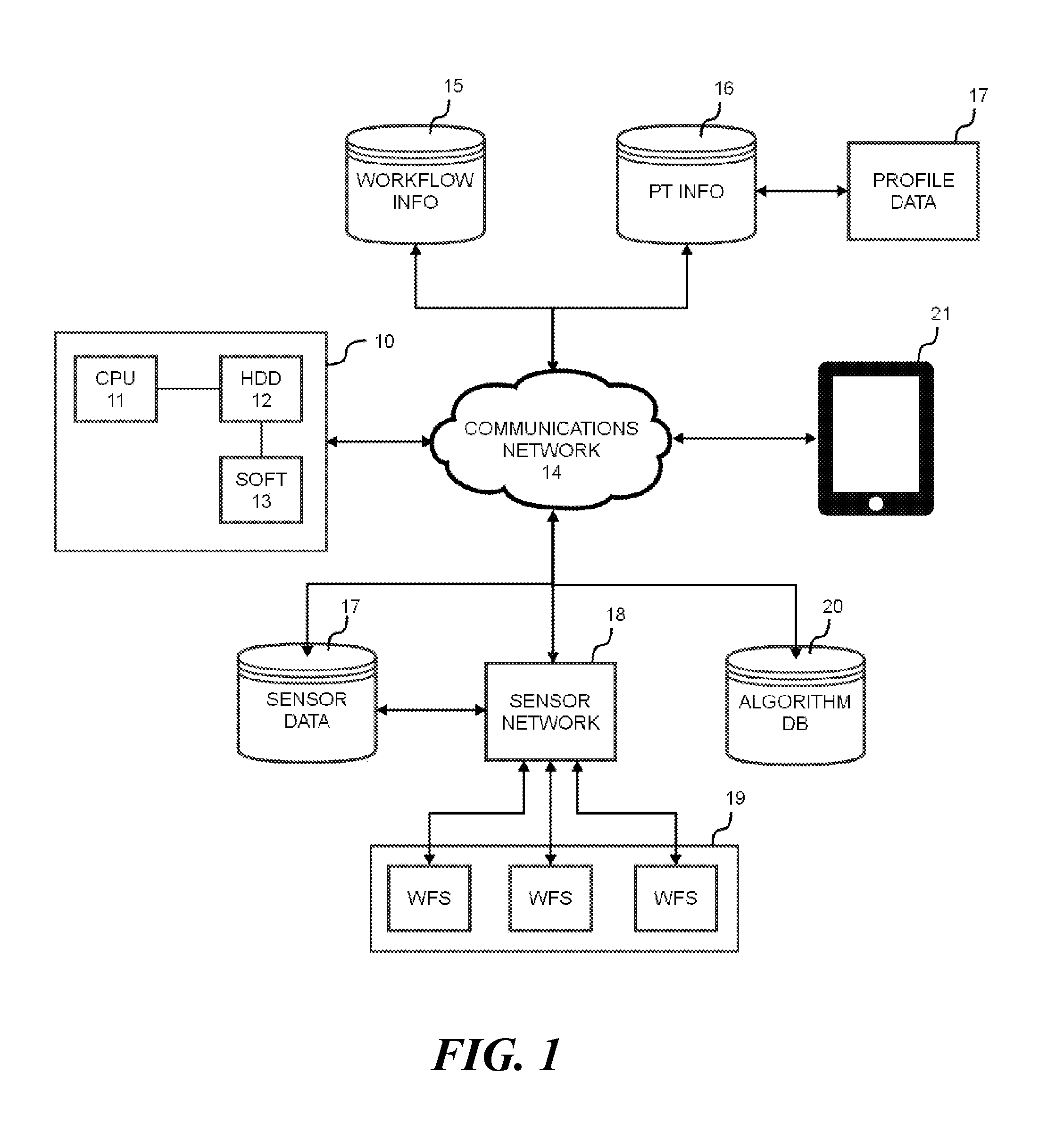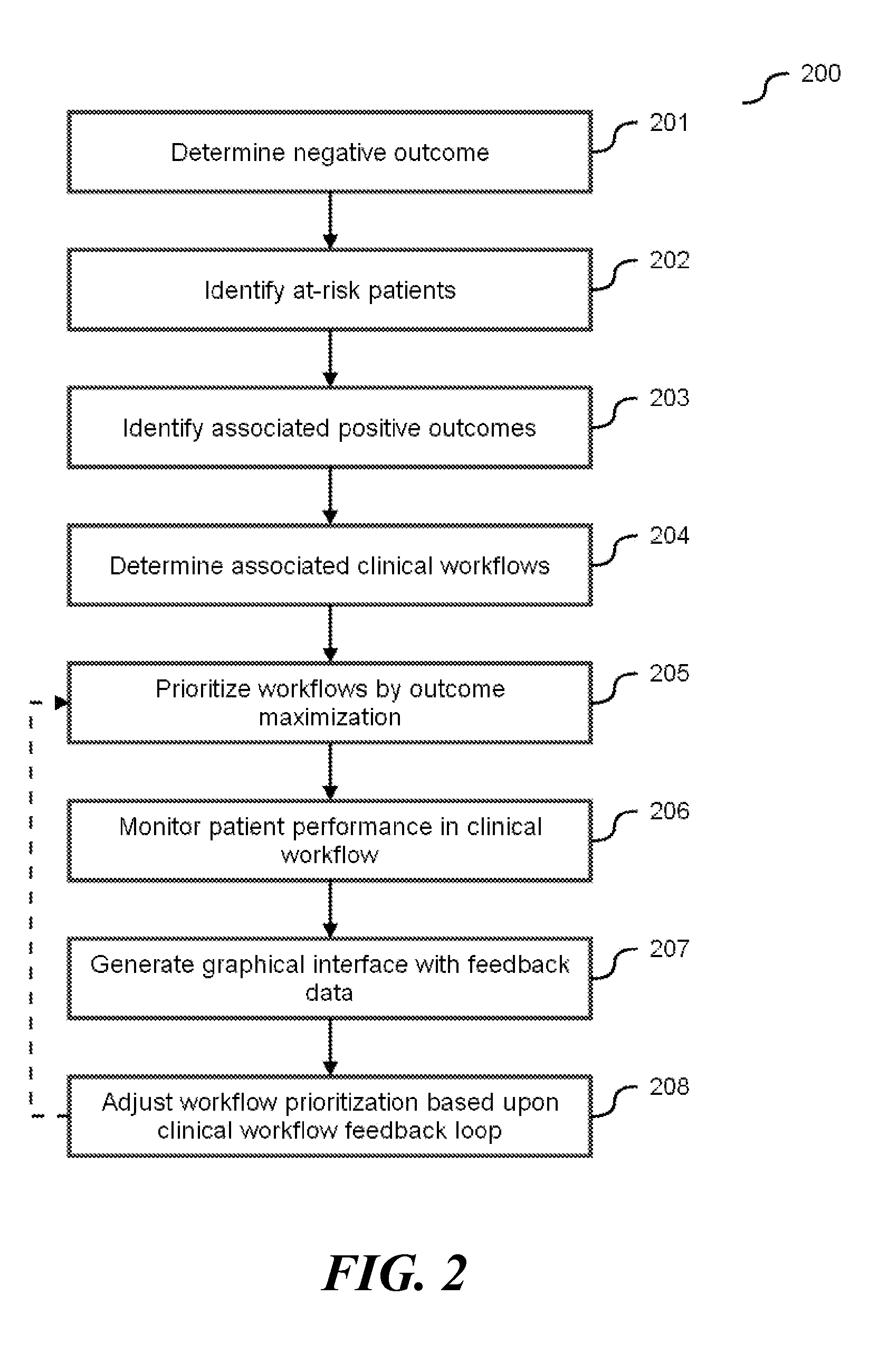Decision support system and method of positive outcome driven clinical workflow optimization
a decision support system and workflow optimization technology, applied in the field of health care systems and methods, can solve the problems of low readmission rate, inconvenient use of resources, and inability to meet the needs of patients, so as to maximize the effect of patient care, increase the efficiency of expense, and maximize the effect of positive outcomes
- Summary
- Abstract
- Description
- Claims
- Application Information
AI Technical Summary
Benefits of technology
Problems solved by technology
Method used
Image
Examples
Embodiment Construction
[0030]Referring generally to FIGS. 1-5, various exemplary embodiments of an invention may now be described in detail. Where the various figures may describe embodiments sharing various common elements and features with other embodiments, similar elements and features are given the same reference numerals and redundant description thereof may be omitted below.
[0031]In a particular embodiment as disclosed herein, a server system provides decision support regarding clinical workflows for a healthcare provider having a census of patients. It may be understood that while the clinical workflow example for healthcare providers is referred to in illustrative fashion throughout the remainder of this description, in various alternative embodiments a system and associated methods of the present disclosure may be applicable in other fields, such as for example but without limitation: an education provider having a census of educators and / or students; an athletic organization or facility having ...
PUM
 Login to View More
Login to View More Abstract
Description
Claims
Application Information
 Login to View More
Login to View More - R&D
- Intellectual Property
- Life Sciences
- Materials
- Tech Scout
- Unparalleled Data Quality
- Higher Quality Content
- 60% Fewer Hallucinations
Browse by: Latest US Patents, China's latest patents, Technical Efficacy Thesaurus, Application Domain, Technology Topic, Popular Technical Reports.
© 2025 PatSnap. All rights reserved.Legal|Privacy policy|Modern Slavery Act Transparency Statement|Sitemap|About US| Contact US: help@patsnap.com



